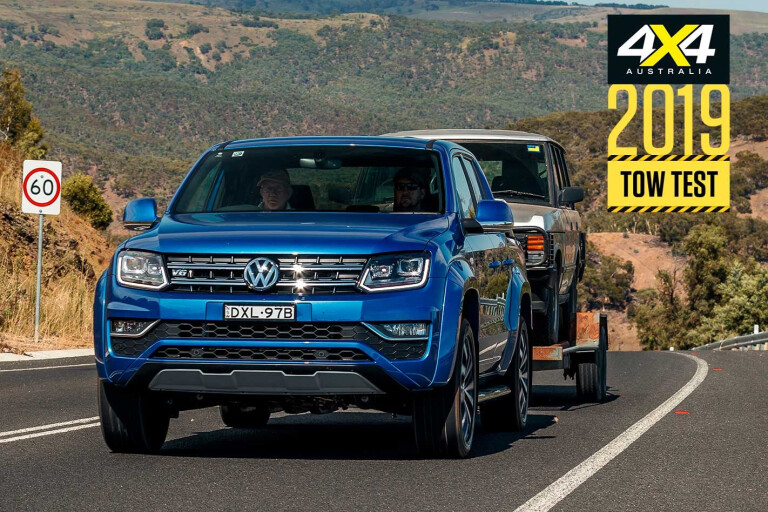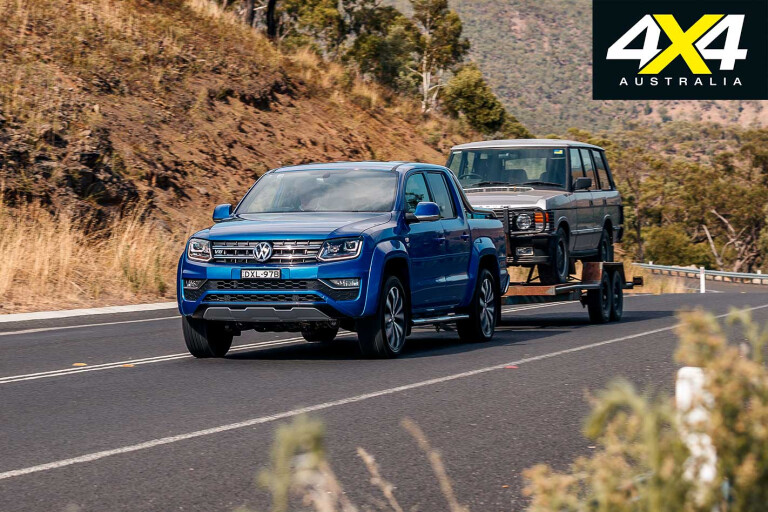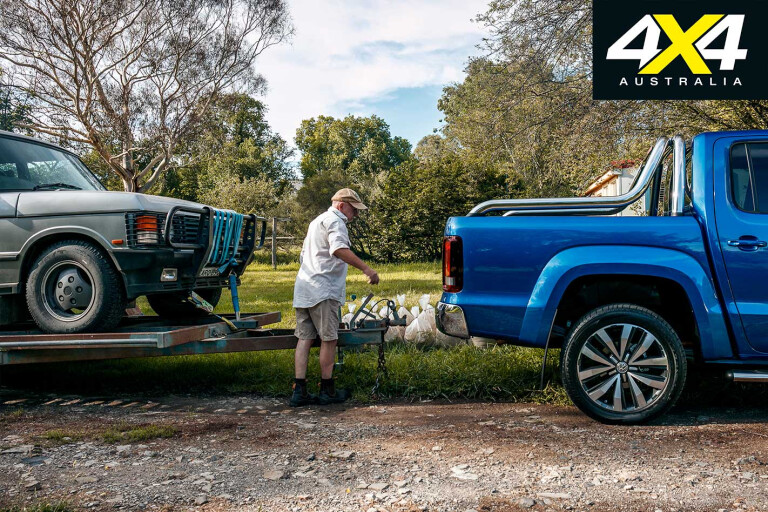
THE ‘580’ on the 2019 Volkswagen Amarok 580 Ultimate stands for 580 Newton metres, the standard measure of torque, or turning force, at the engine’s crankshaft. The 580 tag also distinguishes it from all other Amarok V6s, which claim 550Nm and are less powerful as a result – where the 580 produces up to 200kW, the 550 tops out at 180kW.
Those power figures are what Volkswagen calls ‘overboost’ figures, attained with 70 per cent or more throttle and only in third and fourth gears; it’s there to improve response for hill climbing or overtaking at highway speeds. The 580 otherwise claims 190kW, while the 550 claims 165kW under normal, non-overboost operation. We haven’t tow-tested any Amarok V6 before, 580 or 550, but we have tested both at maximum payload, which didn’t worry either of them.

The Amarok 580 is the second most expensive ute here at $73K, plus on-road costs, but at least at that price all the good kit – sans towbar – comes standard.
On paper the 580 should be the most troubled by our load and tow test, as it will be operating closest to its GCM due to the fact its full-tank kerb weight of 2296kg makes it the heaviest ute here – so there’s less GCM left before you even add the Range Rover, sand bags and occupants.
Even so, the 580 had around 560kg GCM in reserve under our test conditions, while the next ‘worst-off’ is the Ford Ranger 3.2 (the second heaviest ute) with 578kg left in reserve.
Volkswagen Amarok 580 General Load & Tow

WITH THE sand bags in the tub and the trailer load hooked up, the rear suspension dropped around 70mm; so a similar amount to the two Rangers, which effectively levels up the 580’s stance.
Once underway and up to highway speeds on the country road course – with all its undulations, corners and varying surfaces from smooth to bumpy – the 580 felt stable, comfortable and as good chassis-wise as any ute here. Had our test been done when the road was wet, its full-time 4x4 would have given it a further advantage over any ute with part-time 4x4.

A top-of-class performance too from the 580’s powertrain, which is noticeably stronger than the four- and five-cylinder utes, even if it didn’t feel much different in general highway load and tow duties to the X350d.
Both of the V6s had sufficient power to get along with the test load at legal highway speeds and weren’t too fussed by the modest hills; the difference was with chassis performance, as the 580’s was very good … the X350d’s not so good.
Volkswagen Amarok 580 Steep Gradient Load & Tow

THE DIFFERENCE between the performances of the two V6s, let alone between the four- and five-cylinder utes, became starker with our steep gradient climb. By its very nature this is a test of full-throttle power with a test load – not part-throttle power, as is the case with the general test course, at least with the two V6-powered vehicles.
To say the 580 stormed up the steep climb is an understatement. It was comfortably quicker than the X350d, which in turn was comfortably quicker than the rest. As this climb is effectively all about full-power performance in first and second gears, the 580 wasn’t even operating on overboost mode, except for a very short period when it picked up third before having to slow for one of the tight corners.
All good on the downhill section, too, thanks to decent engine braking and disc brakes all around. The paddle shifters also make for easy ‘manual’ control of the gearbox.
Volkswagen Amarok 580 Tow Test Results

Towing Capacity: 3500kg
Towball Download (max): 300kg
Payload: 785kg
2019 VOLKSWAGEN AMAROK 580 ULTIMATE SPECS:
Engine: 3.0-litre V6 turbo diesel
Max power: 190kW @ 3250-4500rpm
Max torque: 580Nm @ 1400-3000rpm
Transmission: 8-speed auto
4x4 system: Single-range full-time
Kerb weight: 2296kg
Fuel tank capacity: 80 litres
ADR fuel consumption: 8.9L/100km
| 2019 VOLKSWAGEN AMAROK V6 PRICES* | |
| CORE 550 | $52,590 |
| SPORTLINE 550 | $56,590 |
| HIGHLINE 550 | $61,090 |
| ULTIMATE 580 | $72,790 |
| *Not including on-road costs | |

COMMENTS